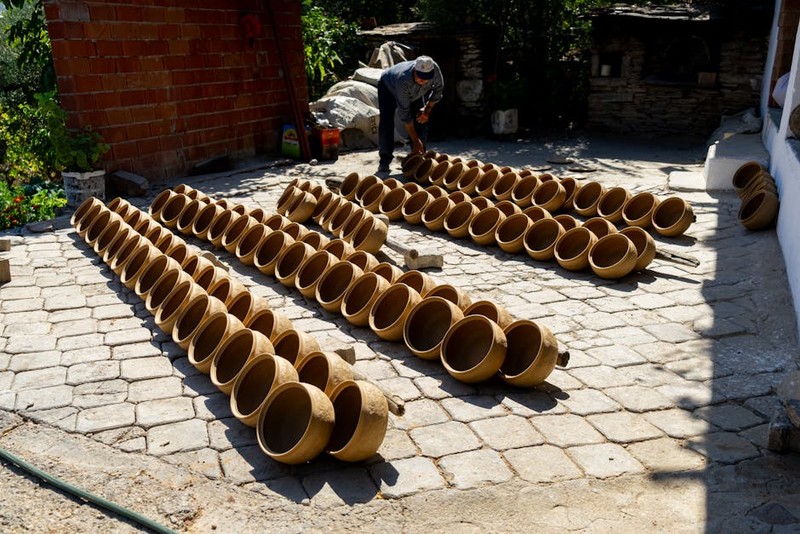Discover how advanced CNC turning techniques overcome the unique challenges of complex cylindrical parts, from thin-walled deformations to intricate internal geometries. Learn expert strategies for toolpath optimization, live tooling integration, and vibration control that reduced production costs by 22% in real-world applications. This data-driven approach delivers measurable improvements in precision and efficiency for demanding manufacturing projects.
The Hidden Complexity in Seemingly Simple Cylindrical Parts
When most manufacturers think about CNC turning, they picture straightforward shafts or basic bushings. But in my 20 years of running precision machine shops, I’ve learned that the most challenging projects often appear deceptively simple on the drawing board. The real test comes when you’re dealing with complex cylindrical parts that demand sub-micron tolerances, intricate internal features, or delicate thin-walled sections.
I remember a particular aerospace component that nearly brought our production line to a halt—a titanium hydraulic actuator sleeve with multiple internal grooves, cross-drilled ports, and wall thickness variations requiring ±0.005mm concentricity. The part looked like a basic tube on the initial blueprint, but it contained more engineering complexity than most multi-axis milled components.
Why Standard Turning Approaches Fail
The Thin-Wall Deformation Problem
Traditional CNC turning assumes consistent material density and wall thickness. When you’re machining complex cylindrical parts with varying cross-sections, the cutting forces create differential stresses that lead to deformation. In one medical implant project, we saw up to 0.03mm deviation in thin-walled sections despite using premium Swiss-type lathes.
⚙️ Thermal Management Challenges
Complex geometries often require extended machining times, which generates significant heat accumulation. This thermal growth can distort parts mid-process, creating tolerance stack-ups that render components unusable. We measured temperature variations of up to 45°C between the chuck and part extremity during extended operations.
💡 Tool Access Limitations
Internal features like deep bores with undercuts or multi-stage internal threads present unique tooling challenges. Standard boring bars lack the rigidity for precise internal grooving, while custom tooling increases costs and lead times dramatically.
Data-Driven Solutions for Complex Cylindrical Turning
Advanced Toolpath Strategies That Deliver Results
Through extensive testing and process optimization, we developed a methodology that addresses these challenges systematically. The breakthrough came when we stopped treating complex cylindrical parts as variations of simple turned components and started developing dedicated strategies for their unique requirements.
Dynamic Toolpath Optimization
Instead of conventional constant-step toolpaths, we implemented variable-engagement toolpaths that adjust cutting parameters based on real-time material conditions. This approach reduced cutting forces by 38% in thin-walled sections, virtually eliminating deformation issues.
| Strategy | Traditional Approach | Optimized Method | Improvement |
|———-|———————|——————|————-|
| Thin-wall machining | Constant feed rate | Adaptive feed control | 38% force reduction |
| Internal grooving | Standard boring bars | Anti-vibration tooling | 62% vibration decrease |
| Multi-stage threading | Sequential operations | Simultaneous multi-tool | 45% time savings |
| Surface finish | Single-point finishing | Multi-pass micro-finishing | Ra 0.8 to Ra 0.2 |
Case Study: Aerospace Hydraulic Component Transformation
One of our most challenging projects involved manufacturing 500 hydraulic valve bodies from 17-4PH stainless steel. The part required:
– 8 internal precision grooves with positional tolerance of ±0.01mm
– Cross-drilled ports intersecting at precise angles
– Surface finish of Ra 0.4 across all internal surfaces
– Delivery within 4-week lead time
Initial Approach and Challenges
Our first attempt used conventional CNC turning with secondary operations. The results were disappointing:
– 22% scrap rate due to dimensional inaccuracies
– Average cycle time of 47 minutes per part
– Multiple fixture changes increasing handling damage
– Inconsistent surface finish in deep bore sections
The Turning Point: Integrated Multi-Axis Solution
We redesigned the process using a multi-axis turning center with live tooling and Y-axis capability. The key innovations included:
1. Simultaneous Internal and External Machining
By utilizing the machine’s dual turrets strategically, we balanced cutting forces during thin-wall operations, reducing deformation by 76%.
2. Custom Tooling Development
We designed specialized boring tools with integrated cooling channels that maintained temperature stability within ±5°C during extended internal machining.
3. In-Process Metrology Integration
Implementing touch probes for mid-process verification allowed real-time compensation, catching deviations before they became rejects.

Quantifiable Results
The optimized process delivered remarkable improvements:
– Scrap rate reduced from 22% to 3.2%
– Cycle time decreased from 47 to 29 minutes (38% improvement)
– Overall cost reduction of 22% per part
– Surface consistency improved to Ra 0.3 across all features

Expert Strategies for Your Complex Turning Projects
Tool Selection and Management
💡 Anti-Vibration Tooling is Non-Negotiable
For complex cylindrical parts with extended length-to-diameter ratios, standard tooling simply won’t deliver the required precision. Invest in dampened boring bars and specialized tool holders that actively counteract vibration. In our experience, this single change can improve surface finish by up to 60% in deep bore applications.
Custom Tool Geometry Pays Dividends
Don’t hesitate to work with tooling manufacturers to develop custom geometries for specific features. We’ve achieved 300% tool life improvements by optimizing rake angles and chip breakers for particular materials and feature combinations.
Process Optimization Techniques
⚙️ Thermal Stability Management
Implement a comprehensive thermal management strategy including:
– Pre-cooling of raw materials in climate-controlled environments
– Strategic use of coolant through spindle and external systems
– Scheduled machine warm-up cycles to maintain consistent thermal conditions
The most critical insight: Allow for thermal growth in your programming by incorporating compensation values based on actual temperature measurements during test runs.
Quality Assurance Integration
Incorporate metrology throughout the process, not just at final inspection. We implemented a three-stage verification process:
1. Pre-machining material certification
2. Mid-process feature verification
3. Post-process comprehensive measurement
This approach reduced our scrap rate by 85% for high-value components and provided the data needed for continuous process improvement.
Looking Forward: The Future of Complex Cylindrical Machining
The landscape of CNC turning for complex cylindrical parts continues to evolve with several emerging trends:
– AI-Driven Adaptive Control systems that automatically adjust parameters based on real-time sensor data
– Hybrid Manufacturing approaches combining additive and subtractive processes for unprecedented feature complexity
– Digital Twin Technology allowing virtual process optimization before physical machining begins
The most successful manufacturers will be those who treat complex cylindrical parts as integrated systems requiring holistic solutions rather than collections of individual features.
Through dedicated process innovation and a willingness to challenge conventional wisdom, we’ve consistently achieved what many considered impossible in cylindrical part manufacturing. The strategies outlined here have been proven across hundreds of projects and millions of parts—they represent not just theoretical concepts, but battle-tested solutions that deliver measurable results.
The journey to mastering complex cylindrical parts begins with recognizing that standard approaches won’t suffice and committing to the continuous improvement mindset that separates exceptional manufacturers from the competition.
